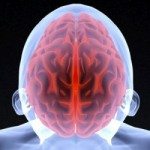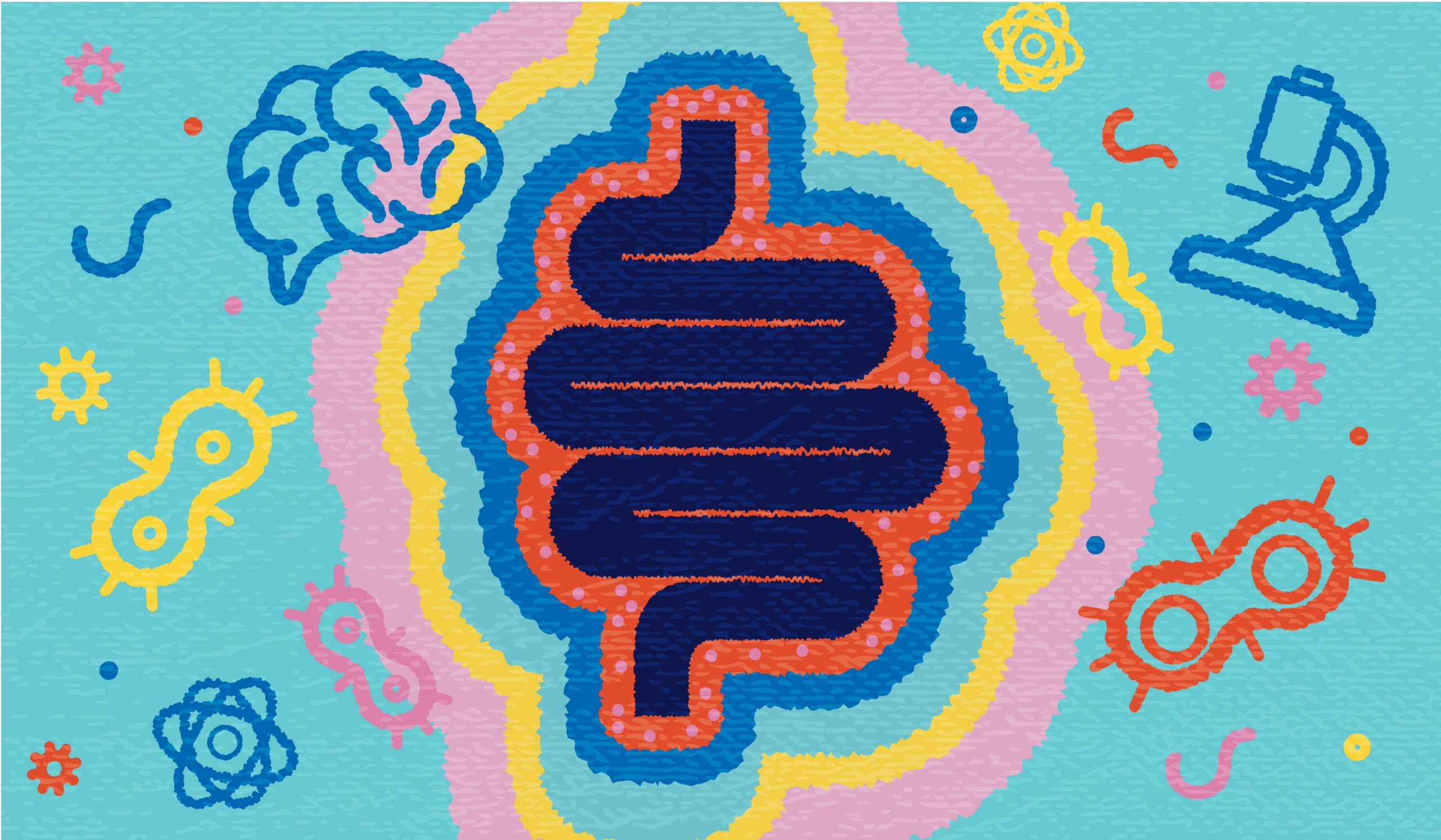The link between neurological conditions and infections is poorly understood, but it is not a new theory.
Microorganisms such as Streptococcus sp. have the ability to cause and worsen various psychological conditions. One common condition or syndrome is PANDAS.
PANDAS is short for Pediatric Autoimmune Neuropsychiatric Disorders Associated with Streptococcal infections. Generally, PANDAS is when neurological symptoms present following acute or persistent Streptococcus infection. PANDAS has been linked specifically to infection with Streptococcus pyogenes, a group A beta-hemolytic streptococcus (GABHS) known to contribute to neurological tics and obsessive-compulsive disorder (OCD).
Over the years, there has been debate as to whether PANDAS was actually a distinct phenomenon, but is now generally accepted to exist and some mechanisms have been suggested. If you have never heard of PANDAS, it is because current medical diagnosis is often reflective of OCD or other specific neurological presentations.
What is the Underlying Mechanism?
What we now understand regarding PANDAS and its variants may actually connect a functional cause to why the same infection may lead to differential effects. What appears to link these disorders together is immune overactivation. Immune overactivation can happen with acute and chronic infections but can be triggered by other mechanisms as well.
Functional medicine practitioners are very careful not to pigeonhole themselves with the need to identify a specific diagnosis or mechanism. This is because a practitioner can miss the forest for the trees if he or she focuses on a specific presentation of symptoms as opposed to what is going on functionally below the surface. In short, they focus on patterns instead of individual mechanisms.
In PANDAS, the mechanism is believed to be autoimmune in nature – a process known as molecular mimicry.
Molecular mimicry is when antibodies intended for foreign proteins and invaders may cause lesions and pathology in healthy tissue. (1). PANDAS is believed to be caused in part by molecular mimicry – the neurological symptoms being a result of GABHS antibodies acting against an individual’s basal ganglia and neural tissue.
Other Presentations Due to a Common Underlying Cause
Molecular mimicry is not a new theory, and while seen in similar disorders, it is not limited to neurological conditions.
Sydenham’s chorea (a movement disorder) is also known to present following acute infection with Streptococcus (2). Likewise, rheumatic fever occurs when GABHS antibodies cross-react with multiple tissues such as the heart, joints, and skin. Lyme disease may also present with various neurological presentations – likely through similar mechanisms between the activity of the spirochete and the numerous co-infections that inevitably come along for the ride.
Lyme disease is known commonly as the “Great Imitator” because of the wide variety of symptoms it can present – including neurological symptoms. It can be missed for months and years before a correct diagnosis is often made.
As for PANDAS, symptoms can also be diverse – ranging from ritualistic behavior, urinary urgency, hyperactivity, separation anxiety, poor handwriting and school performance, impulsivity, mood swings, oppositional defiant behavior, inattention, movement disorders and more.
The range of symptoms may become a diagnostic nightmare for a clinician or parent who wants a specific diagnosis. It can be like identifying a needle in a haystack. It can be incredibly frustrating for a parent when they must visit multiple specialists, only to receive multiple explanations – each specialist’s diagnosis being as believable as the last.
This is where I believe a functional healthcare lens can be useful in these cases as opposed to our current “name it, blame it, and tame it” approach of textbook medicine. I believe many can waste valuable time “diagnosis shopping” when in the meantime they could be addressing functional causes.
Because of this diversity, some suggest widening the PANDAS spectrum to include attention-deficit/hyperactivity disorder (ADD/ADHD) (3); and, additional researchers have pointed out that the same cross-antibody reactions to neurons have been linked to autistic behavior as well (4).
What seems to link all of the symptoms and variants is a common theme of immune overactivation affecting nerve tissue. The immune activation presents a functional, underlying CAUSE, and, is something we can support naturally. In some cases, neurological presentations are the initial and sometimes ONLY presentation of such immune imbalances (5).
When a diagnosis evades you and your doctors, it is time to consider functional links.
It is still unclear as to why some children acquire PANDAS, others acquire PANDAS-variants or other neurological presentations, or while many maintain health following an infection. Risk, particularly autoimmune risk, can be mediated by genetic differences, breastfeeding history, co-morbidities, and a full range of epigenetic mechanisms that scientists are still only in an early stage of understanding.
Check out a great discussion on why focusing on the diagnosis can be so problematic. Dr. Jeffrey Bland, Ph.D. is the “Father of Functional Medicine”, and launched a new must-read book this week on The Disease Delusion.
How Does A Functional Approach Work?
Function can be measured on a spectrum of what’s “healthy” and “normal” in anyone, no matter any genetic susceptibility to acquiring a disorder. “It’s Genetic” leaves us with few clinical options other than to mask the symptoms with medical intervention, or to wait for symptoms to worsen to the point where surgical intervention or more aggressive drug therapy is necessary.
As confusing as this may all sound, it doesn’t have to be. I can look to foundational health issues (stress, gut function, immune triggers, etc) and often see many overlapping symptoms improve when I address these factors. My case history with the patient often lets me know where to tug on the web of physiology. If I get stuck, there’s specialized testing available.
When you start with a focus on function, true integrative care can progress. This is because functional medicine is a bridge between alternative and conventional medicine, not a substitute.
Conventional Treatment of PANDAS
It can be a relief when you finally identify a name and cause for your condition but still can become incredibly frustrating when you run into problems and disappointment with the available treatment.
Conventional treatment for PANDAS may include penicillin treatment, immunoglobulin therapy, plasmapheresis as well as tonsillectomy. The rise of antibiotic resistance, however, as well as the questionable effectiveness of both plasmapheresis (6) and tonsillectomy (7), have made outcomes complicated.
So while conventional approaches may be limited, alternative approaches may offer some clues to what’s missing in care.
For instance, science has discovered new insights into how gut function, gut bacteria, and yeast influence neurological health. Simply put, when you work on improving digestion and the balance of gut flora, you will inevitably have a functional effect on immune and nervous system health.
While the problem may be in the body’s nervous tissues, the functional cause may come back to the health of the gut, acute and chronic stress, blood sugar regulation, and more – in a presentation that will be unique per individual.
Opportunities in Functional Nutrition
Extracts from food, botanicals, and probiotics may have functional properties that help promote healthy levels of not just Strep spp. but other infectious agents as well including molds, viruses, fungi, and bacteria. Many can be used safely as adjuncts to conventional medical treatment, potentially lessening adverse outcomes and improving efficacy. The limitations are doctor education on natural supplements, as well as out-of-pocket costs for supplements.
An extract from coconut oil known as monolaurin, for instance, has been shown to limit the growth of Groups A, B, F & G Streptococci, Mycobacterium in vitro, as well as other bacteria, viruses, fungi & molds. Aside from its popular use for herpes simplex infections, the flu, as well as yeast overgrowth, numerous anecdotal reports from the work of Dr. Jacquelyn McCandless and the late Dr. James Upledger, suggest improvements in behavior in individuals with autism. Many other doctors continue to report positive outcomes with chronic Lyme disease presentations as well.
When I use monolaurin, I use UltraLaurin. But other extracts containing berberine, oregano oil, colloidal silver, and more have helped many individuals. (As always, consult with your health professional on the proper use of natural herbs, and supplements as well as how they interact with medical drugs!)
Medicine and science struggle to establish PANDAS, PANDAS-variants, and related disorders as distinct diseases worthy of clinical intervention. They argue whether one disorder is a sub-type of another, or whether one treatment is more effective than the other.
I also stress that while correct medical diagnosis can be useful, you can still promote functional health naturally and safely using alternative medicine. For a PANDAS or PANDAS-variant situation, my goal as a wellness practitioner would be to maintain and support immune system health. That support may range to gut health, gut health, detoxification support, and more.
Here are some of the possible functional triggers I may screen for:
- Acute and Chronic Infections (Viruses, Bacteria, Fungi/Yeast)
- Allergies/sensitivities (IgE and IgG-mediated reactions, Food, Chemicals, Environmental toxins, Household products, etc)
- Chronic Stress (Cortisol, DHEA, and other precursor hormones)
- Leaky gut/dysbiosis (Creates a general environment for hypersensitivity reactions)
- Exposure to heavy metals and toxins (Can trigger autoimmune presentations as the body resorts to last-ditch effort to clear away toxins by damaging otherwise healthy tissue)
- Poor Detoxification/Liver and Kidney Clearance (methylation, liver function, hormone dominance, etc)
All of the above have been linked to changes in behavior, mood, autoimmune symptoms and more depending on the patient and their unique circumstance.
Among some of my favorite strategies to calm immune activation include:
- Researched extracts like curcumin, resveratrol, EGCG, and others like those found in Phyto Benefits by Davinci Labs.
- Glutathione support through a precursor such as N-Acetylcysteine (NAC) or Liposomal Glutathione
- Occasional 24-hour fasting to support your body’s own clean-up of unwanted antibodies and immune cells. Use intermittent fasting as a lifestyle as long as you’re not experiencing exhaustion, and women may need to be more conservative in their fasting schedules.
- Support Vitamins A and D and Zinc such as in Vitamin ADK Complete and Zinc Copper Balance. These are potent regulators of immune activity in the body.
- Support microbial diversity in the gut as it’s responsible for much of the training and tutoring of immune cells to “learn” to react correctly and efficiently to immune challenges. Favorites that I mix and match most frequently include Megasporebiotic, SporeBoost IG, TrubifidoPRO, and TheralacPRO, as well as PREbiotics like Sunfiber, PhytoFlora Microbiome Support, and FloraSpectrum Prebiotic Powder.
- Maintain balance of healthy omega 3 fats to help keep inflammatory potential low. I use Omega Complete: DHA, EPA, and DPA Support. Kids may especially respond to Equazen PRO by Klaire Labs which has clinical trials with attention-deficit type behaviors. It is arguably more important to eliminate unstable vegetable oils from the diet like soybean, corn, safflower, sunflower, cottonseed, and others.
- Bind toxins and irritants in the GI tract without slowing motility. I use immunoglobulins (IgG), with IgG-Boost 2500 or MegaIgG2000. They are also components of SporeBoost IG and MegaMucosa.
Additionally, non-medical strategies may be effective along the full spectrum of disorders, both before medical intervention is necessary, or at the very least, alongside medical interventions.
While my goal is not to treat, diagnose, prevent or cure PANDAS and related disorders, it is to optimize the function of biological systems using diet, behavior, lifestyle, and nutritional strategies. In effect, I look to promote and maintain health, instead of screening, treating, and managing an existing disease.
It sounds simple, but it shows how we must rethink how we manage complex disorders. The quality of questions we ask determines the quality of the answers we receive.




